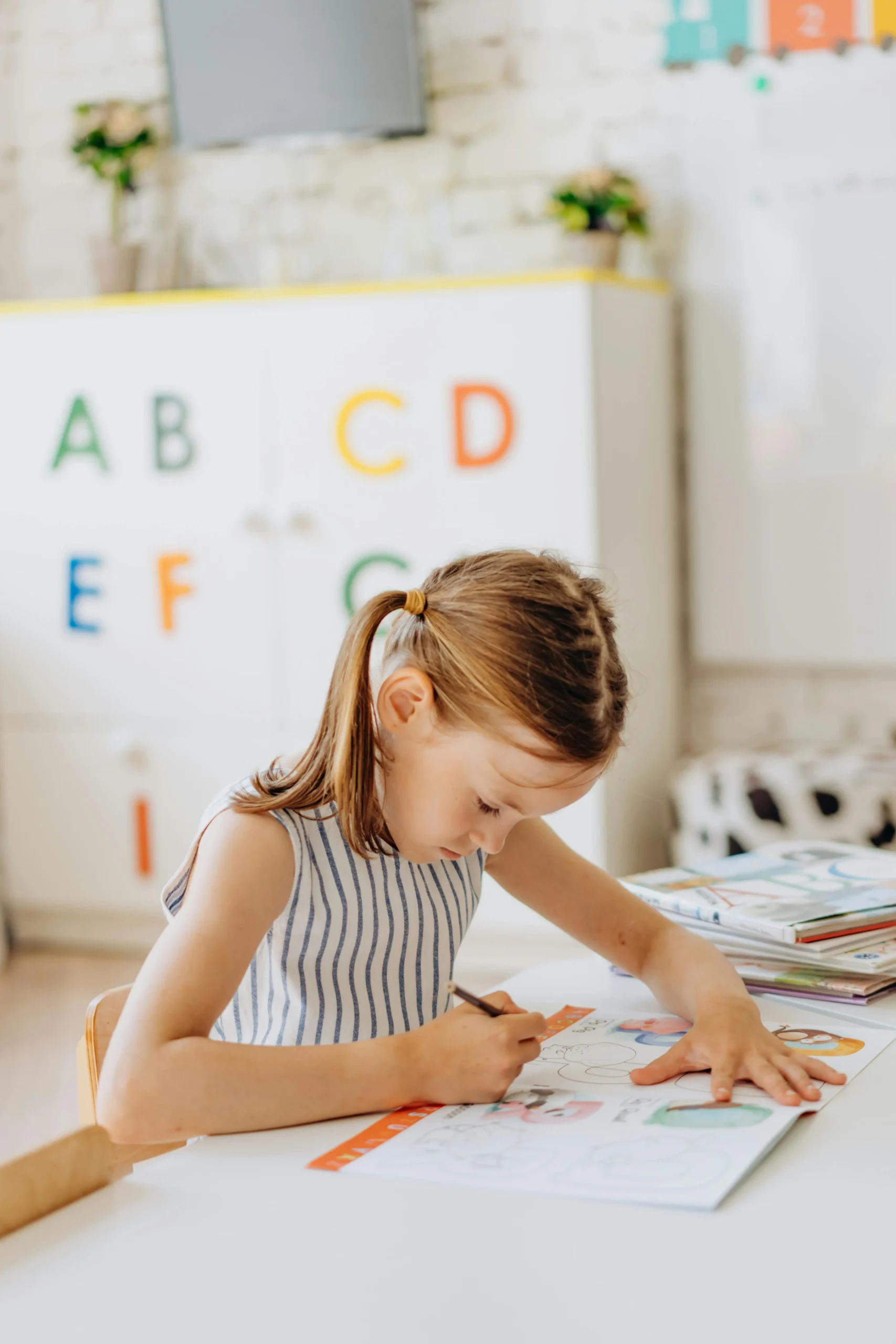Emotional Regulation Activities for Kids: Helpful Tips 2026
Teaching kids to manage their emotions is key for their growth and happiness. Emotional regulation is a skill that helps them deal with social and emotional challenges.
Introducing effective emotional regulation activities can help kids develop good ways to handle feelings. This can improve their mental health.

This article will share tips and strategies for helping kids regulate their emotions. It aims to give parents and caregivers useful insights and advice.
Key Takeaways
- Understanding the importance of emotional regulation in children
- Identifying effective emotional regulation activities for kids
- Learning strategies for teaching emotional regulation to children
- Discovering ways to promote healthy coping mechanisms in kids
- Exploring the benefits of emotional regulation for kids’ mental health
Understanding Emotional Regulation in Children
Emotional regulation in kids is a complex process. It involves managing emotions, behaviors, and reactions to different situations. This skill is crucial for their development, helping them interact with others, succeed in school, and stay mentally healthy.
What Is Emotional Regulation?
Emotional regulation means managing emotional responses to various stimuli. For kids, it’s about recognizing, understanding, and controlling their feelings. This skill helps them face challenges better and stay resilient. It’s not about hiding feelings but learning to handle them in a healthy way.
Key components of emotional regulation include:
- Recognizing and understanding emotions
- Modulating emotional intensity
- Developing coping strategies
Developmental Stages of Emotional Regulation
Emotional regulation grows over time, with key milestones at different ages. Knowing these stages helps support kids’ emotional growth.
| Age Range | Emotional Regulation Milestones |
|---|---|
| Infancy (0-12 months) | Basic emotional regulation through caregiver interaction |
| Toddlerhood (1-3 years) | Beginning to understand and express emotions |
| Early Childhood (4-6 years) | Developing simple coping strategies |
As children grow, their emotional regulation skills get better. This is influenced by both their genes and their environment.
Why Teaching Emotional Self-Regulation Skills Matters
Teaching children to manage their emotions is key to their happiness. Emotional self-regulation helps them handle feelings in different situations. It’s a skill that helps them in many ways.
Short-Term Benefits for Children
Teaching emotional self-regulation can make a big difference in the short term. It helps kids behave better and do well in school. They can focus, listen, and get along with others better.
Some quick wins include:
- Reduced impulsivity
- Improved attention span
- Better conflict resolution skills
Long-Term Impact on Mental Health and Success
The long-term effects are just as important. Kids who learn to manage their emotions tend to have better mental health. They also form stronger relationships and do well in school and work.
| Long-Term Benefits | Description |
|---|---|
| Better Mental Health | Reduced risk of anxiety, depression, and other mental health issues |
| Improved Relationships | Healthier, more stable relationships with family and friends |
| Greater Success | Improved academic performance and career advancement opportunities |
Recognizing Signs of Emotional Dysregulation
It’s important for parents and caregivers to know the signs of emotional dysregulation in kids. This helps them offer support when needed. Emotional dysregulation shows up in many ways, and spotting these signs is key to helping kids handle their feelings.
Physical Signs
Kids with emotional dysregulation might seem restless or fidgety. They could get agitated quickly. They might also show tense body language, like clenched fists or a furrowed brow.
In some cases, they might say they have headaches or stomachaches because of stress.
Behavioral Signs
Behavioral signs include acting out, like tantrums or aggressive behavior. Kids might also pull back from social interactions. They could become overly demanding or stubborn, or struggle to follow rules.
These actions are often a way for kids to show they’re struggling to control their emotions.
Emotional Signs
Emotional signs include intense outbursts, like crying or screaming. Kids might have quick mood swings or find it hard to calm down after getting upset. They might also feel sad, anxious, or irritable more often than their friends.
By recognizing these signs, parents and caregivers can find fun ways to help kids manage their emotions. They can also give them tools to better handle their feelings.
Emotional Regulation Activities for Kids: Essential Techniques
Teaching kids to manage their feelings is key. It’s a skill that helps them all their lives. Here are some important ways to help kids control their emotions.
Breathing Exercises for Immediate Calming
Breathing exercises are a simple way to calm kids down. “Balloon breathing” is one method. Kids inhale deeply, filling their lungs, and then exhale slowly. This slows their heart rate and calms them.
- Have children sit comfortably with their eyes closed.
- Instruct them to breathe in deeply through their nose.
- Hold the breath for a few seconds.
- Exhale slowly through their mouth.
Body Awareness Activities
Body awareness helps kids tune into their physical feelings. “Body scan” is an activity where kids focus on their body, starting from their toes and moving up to their head.

Child-Friendly Mindfulness Practices
Mindfulness helps kids notice their thoughts and feelings. “Mindful walking” is a simple activity. Kids pay attention to their surroundings, noticing sights, sounds, and smells. This keeps them present and focused.
Tips for Practicing Mindfulness with Kids:
- Start with short sessions, such as 5-10 minutes.
- Use guided meditations designed for children.
- Encourage kids to focus on their breath or surroundings.
By adding these activities to daily routines, parents and caregivers can help kids manage their emotions better.
Creative Play-Based Activities to Teach Emotional Regulation to Children
Creative play is a great way to teach kids about emotional regulation. It lets them express feelings, become more aware of themselves, and handle emotions well. Play-based activities offer a safe space for kids to explore and understand their emotions.
Expressive Art Therapy Activities
Expressive art therapy is a strong tool for teaching kids about emotional control. Through art, like drawing or painting, kids can show and deal with their feelings in a silent way. This helps them see and manage their emotions better.
Music and Movement Games for Emotional Expression
Music and movement games are fun ways to teach kids about emotional control. Dancing, playing instruments, or acting out emotions through movement helps kids identify and share their feelings. These games help kids become more aware of their emotions and release them.
Storytelling and Role-Playing Scenarios
Storytelling and role-playing are great for teaching kids about emotional control. Acting out scenarios helps kids learn to handle different emotional situations and understand others better. Through stories, kids can explore complex feelings, and role-playing lets them practice responding to emotions in a safe way.
Adding these creative play activities to daily life helps kids develop strong emotional control skills. These activities teach kids to manage their feelings and help them understand themselves and others better.
Fun Ways to Help Kids Regulate Their Emotions Through Sensory Play
Sensory play is a great way to help kids manage their feelings. It’s fun and helps them feel better. By using their senses, kids can handle their emotions better and become more resilient.
Calming Sensory Bins and Bottles
Calming sensory bins and bottles are great for kids to calm down. You can fill containers with rice, beans, or water and add small toys. This makes a soothing and fun experience. Sensory bottles are made by filling empty bottles with water, oil, or glitter. They offer a calming and interesting sight and feel.

Tactile Activities for Emotional Grounding
Playdough, slime, or sand are great for kids to feel grounded. These activities help kids stay in the moment, especially when they’re stressed or anxious. They provide a calming and organizing experience.
Movement-Based Regulation Activities
Movement activities like dancing, jumping, or yoga help kids release energy and manage their feelings. These activities improve physical awareness and can be changed to fit different ages and abilities. They’re a useful tool for emotional regulation.
Building Self-Control: Strategies for Teaching Children Emotional Self-Regulation
Teaching children to control their emotions is key for their growth. It’s a complex task that needs many strategies. These help kids manage their feelings and actions in various situations.
Self-control is a big part of emotional self-regulation. It lets kids make smart choices, resist urges, and handle their emotions well. Parents and caregivers can use games and activities to teach this important skill.
Impulse Control Games and Activities
Impulse control is a big part of self-regulation. Games and activities that help with impulse control teach kids to pause and think before acting. Here are some examples:
- Red Light, Green Light: A classic game that teaches children to stop and go based on commands.
- Simon Says: Another game that requires children to follow instructions only if they are preceded by “Simon says.”
- Freeze Dance: Children dance and then freeze in place when the music stops, practicing self-control.
Delayed Gratification Exercises
Teaching kids to wait for things they want is important for self-control. Exercises that help with delayed gratification include:
- Waiting games: Simple games where children have to wait for a signal before they can act.
- Saving for a reward: Encouraging children to save tokens or points for a larger reward teaches them the value of waiting.
- Cooking or baking together: Engaging in recipes that require waiting for ingredients to be ready or for the food to cook.
Problem-Solving Skills Development
Teaching kids to solve problems is also crucial for emotional self-regulation. Activities that improve problem-solving include:
- Puzzles and brain teasers: Engaging children in puzzles that require critical thinking.
- Role-playing: Using scenarios to teach children how to navigate different social and emotional challenges.
- Open-ended questions: Encouraging children to think critically by asking them open-ended questions about their feelings and experiences.
By using these strategies every day, parents and caregivers can help kids develop self-control. This sets them up for success and happiness in the long run.
Age-Appropriate Emotional Regulation Tools for Kids
As kids grow, they learn to control their feelings better. They need tools and strategies that fit their age and stage of development. Emotional control is not the same for everyone; it grows with the right help and practices.
Toddlers and Preschoolers (2-5 years)
Toddlers and preschoolers do best with simple, fun activities. Visual aids like emotion charts and feeling faces help them understand and share their feelings. Play-based activities, like role-playing and puppet shows, teach them to manage emotions through stories.
- Emotion cards for identification
- Simple breathing exercises
- Playdough for tactile expression
Elementary School Children (6-9 years)
Elementary school kids need more structured ways to control their feelings. Mindfulness exercises and deep breathing help them calm down. Drawing and writing about their feelings also helps them express what they’re going through.
| Activity | Benefit |
|---|---|
| Mindfulness coloring | Reduces stress and anxiety |
| Feelings journal | Enhances emotional awareness |
Tweens (10-12 years)
Tweens can handle more complex ways to manage their feelings, like cognitive-behavioral techniques. They benefit from journaling and talking about their feelings with adults. Playing team sports and being active also helps them manage their emotions.
“The goal is to help children understand and manage their emotions, not to suppress them.”
By choosing the right tools for each child’s age and needs, parents and caregivers can offer great support. It’s important to be patient and consistent. Learning to control emotions takes time.
Implementing Activities Promoting Emotional Regulation in Different Settings
Emotional regulation activities can be used in many places, like home, school, and when we’re with others. This makes it easy for parents and teachers to help kids learn to control their feelings. It’s a big help in their growth.
Creating Calm-Down Corners at Home
Setting up a calm-down corner at home is a great idea. It should be a quiet, cozy spot with pillows, blankets, and calming pictures. Encouraging kids to go there when they’re upset helps them learn to calm down.
Classroom Strategies for Teachers
Teachers can do lots to help kids manage their feelings in class. They can start the day with breathing exercises and mindfulness practices. They can also use pictures and ask how kids are feeling to help them stay in control.
Supporting Regulation During Social Interactions
It can be tough for kids to handle their feelings in social situations. Grown-ups can help by showing them how to manage their emotions. They can teach empathy and encourage kids to talk about their feelings. Practicing different social situations helps kids get ready for real-life interactions.
Overcoming Challenges When Teaching Emotional Regulation
Teaching emotional regulation can face several challenges. Children might not want to join in, or they might need special strategies because of their needs. It’s also important for all caregivers to be consistent.
When Children Resist Emotional Regulation Activities
Children often don’t want to do emotional regulation activities. This is because they might not find them fun or interesting. To make it more appealing, try making emotional regulation fun with games, art, and movement.
For example, you can use breathing exercises like blowing bubbles or balloons. This makes the activity fun and interactive.
Adapting Strategies for Children with Special Needs
Children with special needs need their own ways to learn emotional regulation. For example, kids with autism might like sensory activities. Those with ADHD might need more physical activities.
It’s important to understand what each child needs. Then, you can adapt strategies to fit their needs.
Maintaining Consistency Across Caregivers
Being consistent is crucial when teaching emotional regulation. Caregivers, teachers, and parents should all use the same approach. This can mean creating a shared routine or using the same strategies everywhere.
This ensures the child gets the same support no matter where they are.
Conclusion: Nurturing Emotional Intelligence for Lifelong Success
Teaching kids to manage their feelings is key for their future success. Activities that help kids control their emotions are very important. They help kids handle their feelings and actions well.
Parents and caregivers can use fun ways to teach kids about emotions. This includes creative play, sensory activities, and mindfulness. These methods help kids learn self-control and understand themselves better. They also help kids deal with social situations.
As kids get older, knowing how to manage emotions becomes even more crucial. By teaching them emotional regulation, we give them a strong base for mental health and success. This helps them grow into well-adjusted adults.
By focusing on emotional regulation, we help kids reach their highest potential. This way, they can live happy and healthy lives.
FAQ
What are some effective kids’ emotional regulation techniques?
Effective techniques include breathing exercises and body awareness activities. Mindfulness practices also help children calm down and manage their emotions.
How can I help my child develop emotional self-regulation skills?
You can teach your child impulse control games and delayed gratification exercises. Problem-solving skills are also important. Plus, showing them how to regulate emotions yourself helps a lot.
What are some fun ways to help kids regulate their emotions?
Fun ways include sensory play like calming bins and bottles. Tactile activities and movement-based games also help. Creative play, like art and music, is great too.
What are some age-appropriate emotional regulation tools for kids?
Tools vary by age. Toddlers and preschoolers use visual aids. Elementary school kids learn to label emotions. Tweens use self-monitoring techniques.
How can I implement emotional regulation activities in different settings?
At home, create calm corners. In the classroom, use teacher strategies. During social times, model and teach healthy emotional regulation.
What are some strategies for teaching children emotional self-regulation?
Teach impulse control, delayed gratification, and problem-solving. Games, activities, and creative play also help develop self-control.
How can I adapt emotional regulation strategies for children with special needs?
Adapt strategies by considering their needs and abilities. Work with caregivers and therapists to create a personalized plan. This plan should use their strengths and challenges.







